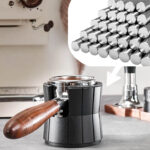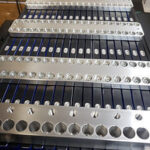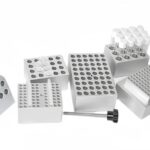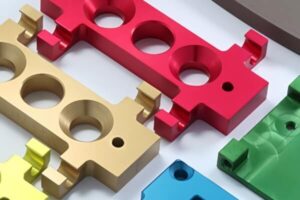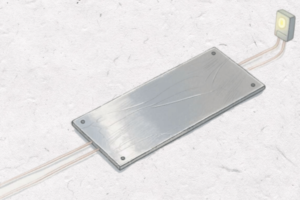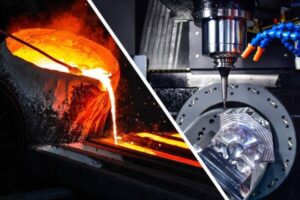In the manufacturing world, knowing about material properties is key to better production. This article looks into whether 6061 Aluminum is good for machining. We’ll check its features, benefits, and uses in CNC machining. This will help professionals find the best aluminium alloys for their work.
6061 aluminium is often the top pick for many machining tasks. We’ll see why it’s so popular for different machining needs.
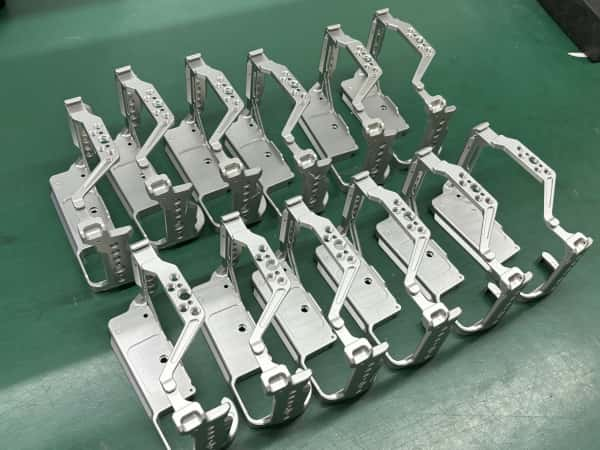
Key Takeaways
- 6061 aluminium offers an excellent balance of strength and workability.
- Its corrosion resistance makes it suitable for a variety of environments.
- Machining 6061 can enhance the precision of CNC parts.
- The alloy’s versatility allows for a wide range of industrial applications.
- Choosing a knowledgeable machining manufacturer is essential for achieving optimal results.
Introduction to 6061 Aluminum
6061 aluminum is a well-known alloy in the manufacturing world. People celebrate it for its excellent qualities and flexibility. The mix of magnesium and silicon boosts its strength and durability. This makes it perfect for many uses.
Machinists choose this alloy for CNC projects because it shines in machining aluminium tasks. Its balance of physical and mechanical properties is key. This balance makes it great for building parts and machinery.
The growing use of 6061 aluminum in CNC work shows its importance. Quality materials like this are crucial for innovation and efficiency in making things. As we delve deeper into its properties and uses, it becomes clear that people value 6061 aluminum so much.
Properties of 6061 Aluminum
The special properties of 6061 aluminum make it great for many machining tasks. Knowing its strength and how well it resists corrosion is key for makers. These two points show why 6061 aluminum is reliable and efficient.
Strength and Durability
6061 aluminum is known for its strength. It can handle a lot of weight and stress. With a tensile strength of about 310 MPa, it’s perfect for building things.
Its durability means it lasts long in tough places. Parts made from this alloy stay strong over time.
Corrosion Resistance
6061 aluminum also stands out for its resistance to corrosion. A natural oxide layer on its surface keeps it safe from chemicals. This is great for places where moisture and harsh chemicals are common.
This makes components made from 6061 aluminum last longer. It’s a top pick for engineers and makers.

| Property | Description |
|---|---|
| Strength | Tensile strength of approximately 310 MPa |
| Durability | High resistance to fatigue, making it suitable for structural applications |
| Corrosion Resistance | Natural oxide layer prevents chemical degradation |
Is 6061 Aluminum Good for Machining?
6061 aluminium is a top choice for machining. People know it for its great qualities and flexibility. Knowing its benefits and how it stacks up against other alloys helps in making smart choices in manufacturing.
Advantages of Using 6061 Aluminum
Using 6061 aluminum for machining comes with many perks. These benefits make it suitable for various tasks. Here are some key advantages:
- Excellent Machinability: It gives a smooth finish and is easy to work with.
- Good Strength-to-Weight Ratio: It’s strong but doesn’t weigh too much.
- Corrosion Resistance: It’s great for outdoor use, cutting down on upkeep.
- Weldability: It works well with most welding methods, making it versatile.
- Availability: It’s easy to find in different forms, helping manufacturers.
Comparison with Other Aluminium Alloys
When comparing aluminium alloys, 6061 often shines. Here’s a table showing how it compares to other common alloys. It highlights its unique qualities:
| Property | 6061 Aluminum | 6063 Aluminum | 5083 Aluminum |
|---|---|---|---|
| Strength | Moderate | Lower | Higher |
| Corrosion Resistance | Good | Better | Excellent |
| Weldability | Good | Excellent | Moderate |
| Machinability | Excellent | Good | Moderate |
Applications of 6061 Aluminum in CNC Machining
6061 aluminum is a versatile material in CNC machining. It’s perfect for many uses across different industries. It’s great for both big structures and small designs, showing its reliability in many places.
Popular Uses in Industry
6061 aluminum is widely used in many fields. Here are some examples:
- Aerospace components need strong, yet light materials.
- Car parts like frames and chassis improve performance.
- Marine parts, like boat fittings and hulls, fight off corrosion.
- Architectural structures need to look good and last long.
- Manufacturing equipment and machinery parts need precise engineering.
CNC Parts Created with 6061 Aluminum
CNC parts made from 6061 aluminum perform well. Here are some examples:
- Brackets support assemblies and frameworks.
- Plates are used for machining and mounting.
- Covers and enclosures protect sensitive parts.
- Pipes and tubing transport fluids in systems.
- Custom prototypes meet specific project needs.
Machining Techniques Suitable for 6061 Aluminum
Working with 6061 aluminium requires specific machining techniques. These methods help professionals in the manufacturing industry work more efficiently. They also make the most of this versatile material’s properties. The main techniques used are turning and milling, each with its own benefits.
Turning and Milling Techniques
Turning aluminium involves rotating the workpiece while a cutting tool removes material. It’s great for making cylindrical parts. This method gives a smooth finish and tight tolerances.
Milling aluminium, on the other hand, uses a rotating cutter on a stationary workpiece. It’s perfect for complex shapes and features. This makes 6061 aluminium even more versatile.
When using these techniques, it’s crucial to consider cutting speed, feed rate, and tool selection. Sharp carbide tools improve the workpiece’s quality and reduce tool wear. Here’s a comparison of turning aluminium and milling aluminium:
| Technique | Advantages | Applications |
|---|---|---|
| Turning Aluminium | Smooth surface finish, high accuracy | Cylindrical parts, shafts, fittings |
| Milling Aluminium | Complex shapes, adaptability | Plate components, intricate designs |
Knurling Benefits
Knurling is another technique that offers unique benefits. It creates a textured surface, which improves the grip of parts like knobs and grips made from 6061 aluminium. Knurling boosts usability and functionality without weakening the material.
Best Practices for Machining 6061 Aluminum
Machining 6061 aluminium requires the best practices for top results. This alloy is known for its great qualities. It needs careful techniques for precision and efficiency.
- Utilise sharp tools: Dull tools cause bad finishes and wear out faster. Replacing or sharpening tools regularly makes machining smoother.
- Control cutting speeds: Choose the right cutting speeds for each job. Slower speeds can reduce heat, while faster speeds help with chip removal.
- Implement adequate cooling: Fluid cooling keeps heat down and tools last longer. Using air or coolant during machining stops thermal damage.
- Adopt proper feed rates: Adjust feed rates based on tool size and job type. This improves control and surface quality. Trying different rates can find the best method.
These CNC machining tips are a good start for better machining. Looking at these tips often leads to finding new ways to improve. Below is a table with key factors for machining 6061 aluminium.
| Practice | Description | Impact on Machining |
|---|---|---|
| Tool Sharpness | Sharp tools reduce friction and improve finish. | Less tool wear and better efficiency. |
| Cutting Speeds | Adjust speeds for different jobs to avoid overheating. | Better chip removal and accuracy. |
| Cooling Methods | Coolants reduce heat during machining. | Longer tool life and material integrity. |
| Feed Rates | Adjusting feed rates improves finishes. | Faster machining with better surface quality. |
Choosing the Right Machining Manufacturer
Finding a reliable machining manufacturer is key for any project with 6061 aluminium. It’s important to look at factors that affect quality and performance. A good CNC service provider can greatly improve your product’s precision and strength.
When picking a machining shop, consider these points:
- Experience: Choose a manufacturer with lots of experience in 6061 aluminium and similar materials.
- Technical Expertise: Check if the CNC service provider has the skills you need.
- Equipment Quality: Make sure the shop has modern, high-quality machines for accurate work.
- Customer Reviews: Look at what past clients say to see if the manufacturer is reliable.
- Certifications: Check for industry certifications to show they meet quality standards.
These factors are crucial for a successful partnership. They help make your projects more efficient and effective.
Conclusion
6061 aluminium is more than just good for machining. It’s a top choice for many uses in the manufacturing world. Its strength and resistance to corrosion are big pluses. Plus, it’s easy to machine, making it a favourite among experts.
This summary shows why 6061 aluminium is great for making high-quality parts. It’s perfect for creating precise components that meet tough standards. Knowing how to use CNC aluminium machining helps manufacturers work better and waste less.
Using 6061 aluminium improves your product’s quality and makes production smoother. The benefits of CNC aluminium are clear. With the right skills, we can turn your ideas into real products, ensuring they’re reliable and top-notch.




